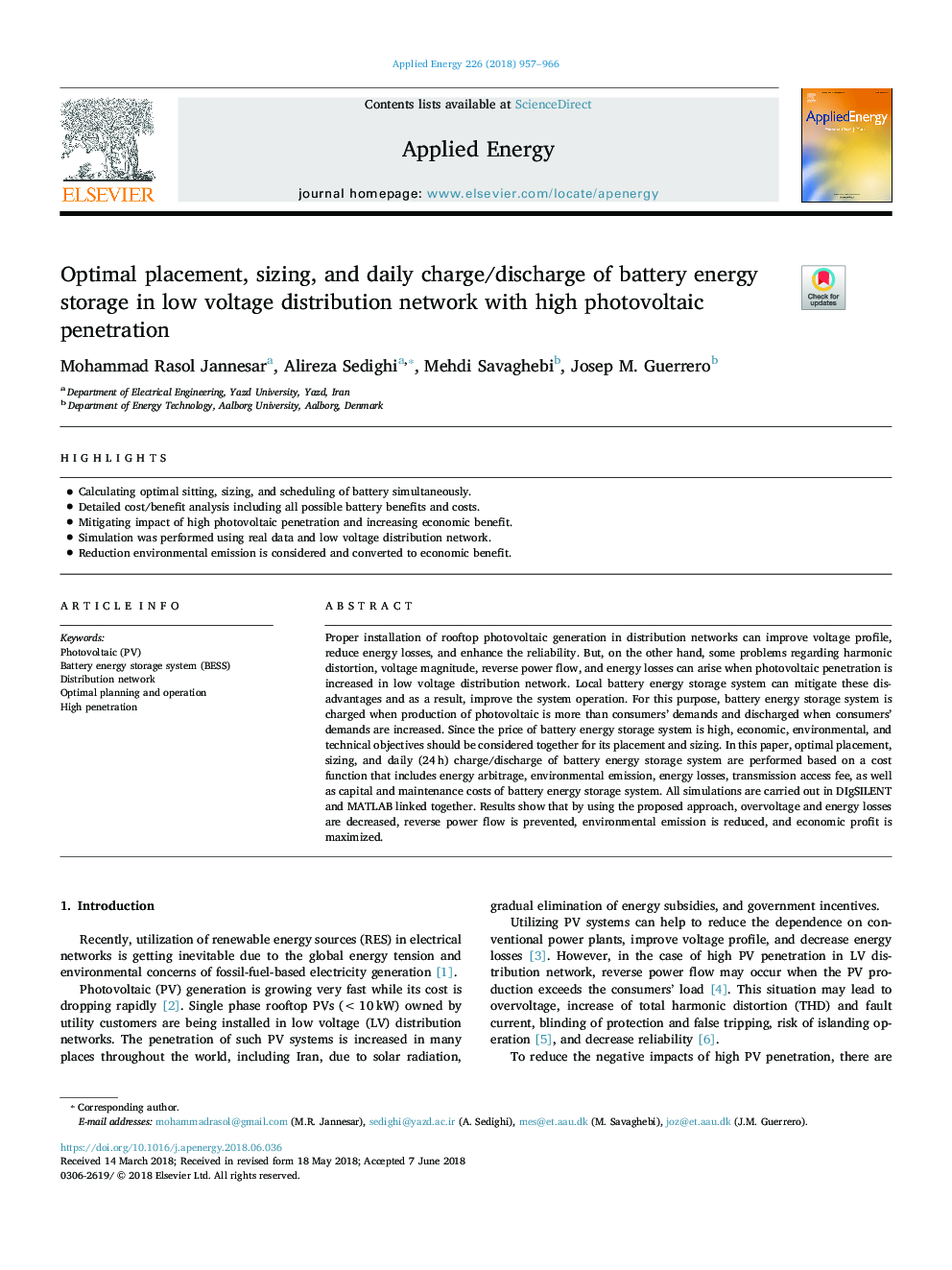| Article ID | Journal | Published Year | Pages | File Type |
|---|---|---|---|---|
| 6679868 | Applied Energy | 2018 | 10 Pages |
Abstract
Proper installation of rooftop photovoltaic generation in distribution networks can improve voltage profile, reduce energy losses, and enhance the reliability. But, on the other hand, some problems regarding harmonic distortion, voltage magnitude, reverse power flow, and energy losses can arise when photovoltaic penetration is increased in low voltage distribution network. Local battery energy storage system can mitigate these disadvantages and as a result, improve the system operation. For this purpose, battery energy storage system is charged when production of photovoltaic is more than consumers' demands and discharged when consumers' demands are increased. Since the price of battery energy storage system is high, economic, environmental, and technical objectives should be considered together for its placement and sizing. In this paper, optimal placement, sizing, and daily (24â¯h) charge/discharge of battery energy storage system are performed based on a cost function that includes energy arbitrage, environmental emission, energy losses, transmission access fee, as well as capital and maintenance costs of battery energy storage system. All simulations are carried out in DIgSILENT and MATLAB linked together. Results show that by using the proposed approach, overvoltage and energy losses are decreased, reverse power flow is prevented, environmental emission is reduced, and economic profit is maximized.
Related Topics
Physical Sciences and Engineering
Energy
Energy Engineering and Power Technology
Authors
Mohammad Rasol Jannesar, Alireza Sedighi, Mehdi Savaghebi, Josep M. Guerrero,
